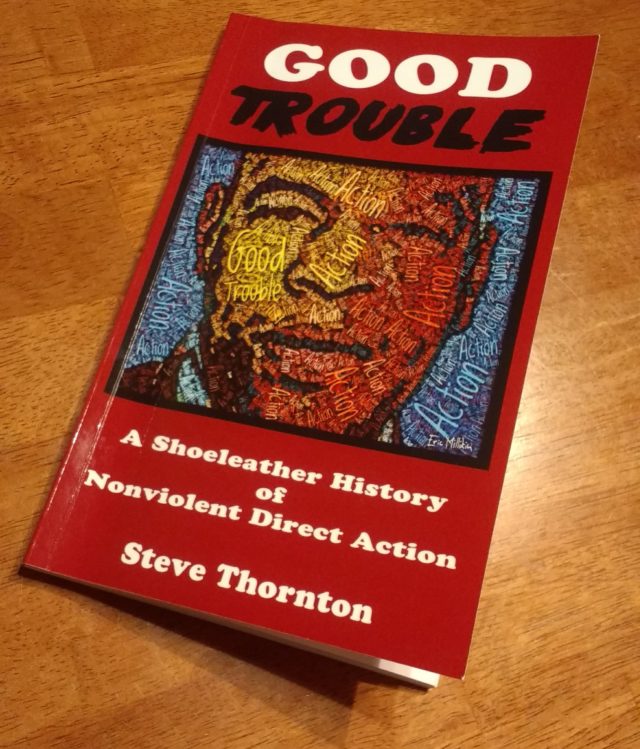 If you live in Hartford and call yourself an activist, then you owe it to yourself to read Steve Thornton’s latest book, Good Trouble: A Shoeleather History of Nonviolent Direct Action. Its digestible nuggets help good troublemakers place themselves within the context of a larger narrative.
If you live in Hartford and call yourself an activist, then you owe it to yourself to read Steve Thornton’s latest book, Good Trouble: A Shoeleather History of Nonviolent Direct Action. Its digestible nuggets help good troublemakers place themselves within the context of a larger narrative.
Drawing on his lifelong commitment to social justice, Thornton covers anti-war activism, student-led organizing, the labor movement, and more, with some of the richest passages devoted to neighborhood-level fights.
Each vignette sparks conversation and inspires additional research. Thornton starts quick by recalling Barbara Henderson’s 1969 battle to have dams in the Park River removed following several drownings. Those not in Hartford at the time, or paying much attention, might be confused by Thornton’s description of a scenario involving “artificially high” water levels. Why would this have occurred? This is a moment that encourages the reader to do more independent sleuthing.
What one finds from deeper investigation is that the Courant in 1968 wrote about how a 3-6 foot high trash dam was uncovered inside the conduit that was said to be created to prevent floods. They wrote that “contractors working on the Park River Flood Control project were charged […] with leaving old concrete slabs, truck tires, chunks of steel, junk and other debris in the river,” and if that were not enough, those contractors then hid “this by letting water into the project before an inspection.” The next year, the newspaper reported that two “temporary dams” had been “constructed to keep an area near Hamilton Street dry so [the contractors] could build a conduit there.” The same year, the paper reported that contractors began to remove those dams located near the Hamilton Street bridge and near Laurel Street when Governor Dempsey ordered the State Highway Department to deal with it. This raises the question of why Connecticut’s State Highway Department would be tasked with a flood control project.
Another equally thoughtful story in Thornton’s book is one that clarifies why the 311 app contains complaints to this day of large trucks using Stone Street. Residents counted many as 98 construction trucks per hour rolling down residential Stone Street in the 1970s and 1980s. An estimated half of those belonged to the Balf company. This story might get you curious about the role Balf has played in the city, and a little extra research will tell you that they have received criticism over the years for emissions and odors at the quarry on the Hartford, Wethersfield, and Newington town line; in the 1920s, they were also ordered to stop dredging the Park River near its confluence with the Connecticut River. A little knowledge is dangerous, and this account might just motivate readers to look into how other companies have played a role in the re-shaping of Hartford’s natural environment.
If you think our city sidewalks today have a ways to go to be ADA accessible, you’ll want to read Thornton’s account of ADAPT deciding to JFDI in 1988 when they took sledgehammers to the sidewalk to create their own curb ramps by Union Station. This puts into perspective the ongoing efforts we see today — whether those take the form of Instagramming people’s interference with access, or if they mean yelling again and again at the City of Hartford to install curb ramps in sensible locations, or if it means approaching folks on the street who decide that idling across the crosswalk and/or curb ramps is no big deal.
Though a conclusion would aid the reader in tying together the disparate tales, it may be fine for this work to feel unfinished, as is our work in repairing the world. The Introduction does the work that a conclusion may have done anyway, with Thornton suggesting a re-framing of useless debate over “violence vs. nonviolence.” I won’t spoil it, but the paragraph in which he states this is worth the price of admission alone.
Thornton will be giving a book talk (followed by signing) at Barnes & Noble UConn Hartford Bookstore (18 Front Street) on June 26, 2019, from 6:00 PM until 8:00 PM.